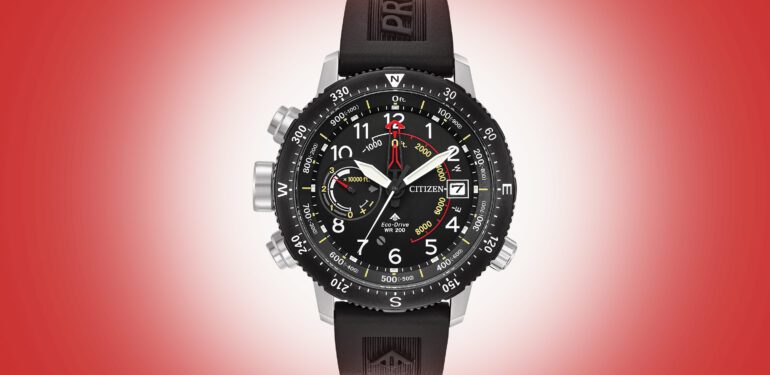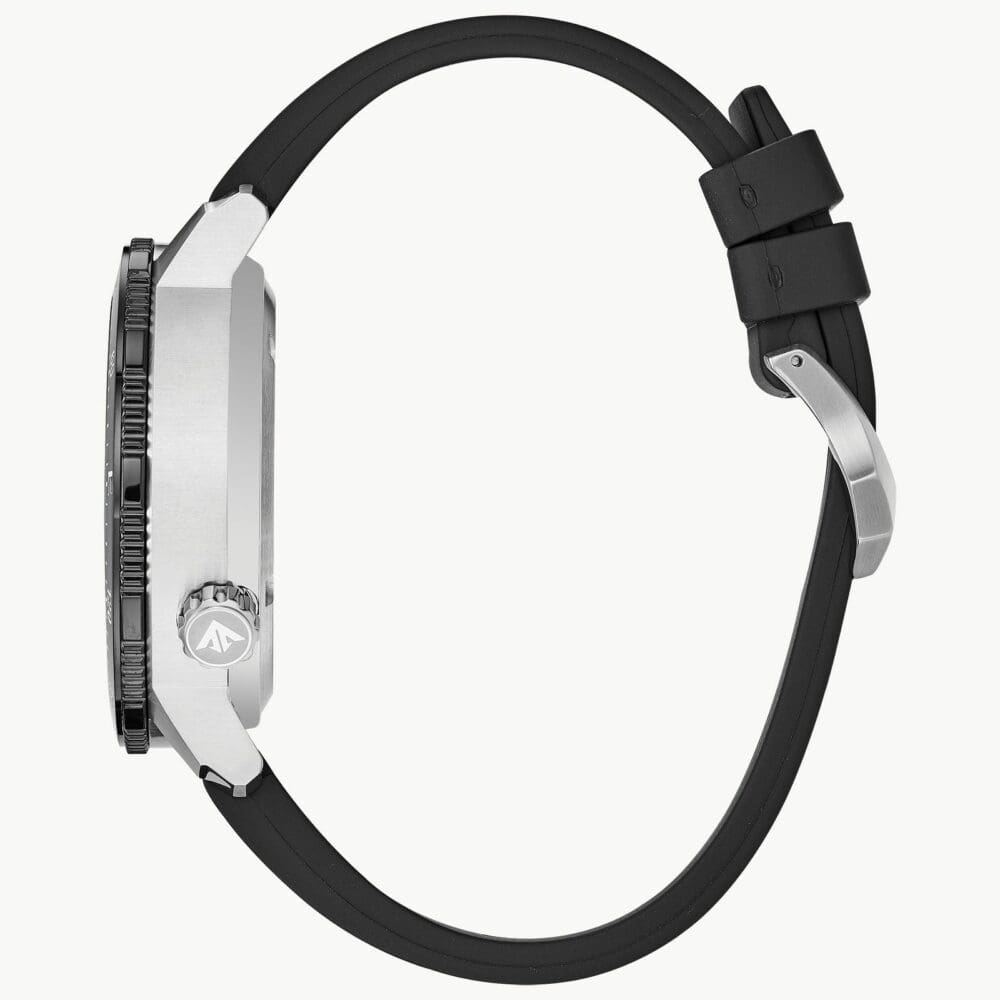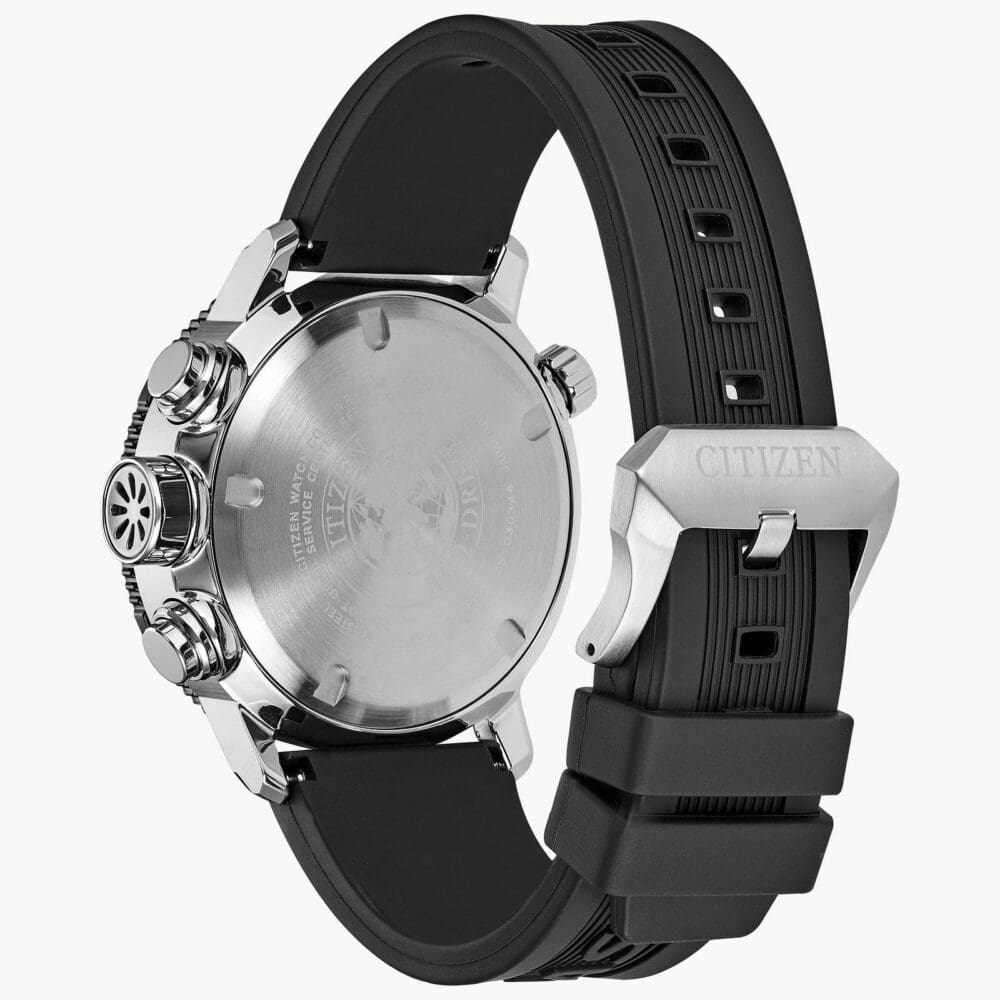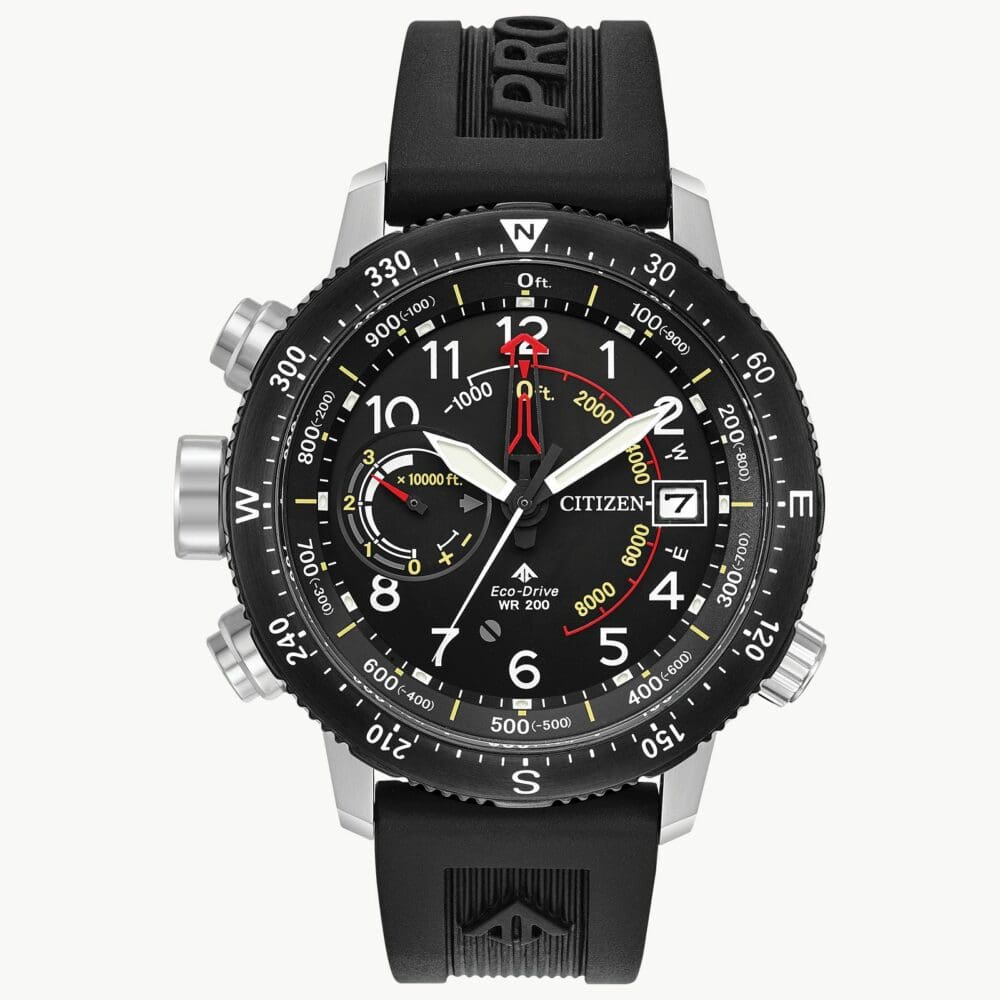One of the tooliest of tool watches guides the way up and out.
The majority of tool watches on wrists offer a small set of features. Generally, the most worn are not in the dark, murky depths but, well, everywhere else. Desk divers, as I’ve heard them called, remove most of the tool functions and perhaps work to give the wearer a look or a feel more than keep them safe. Other tool watches have been designed with and offer features specific to their uses. The Rolex OP Milgauss was built to resist powerful electromagnetic fields that some scientists may find in their work. Various pulsometer watches were designed with medical professionals in mind, explicitly to quickly determine a patient’s heart rate. Chronographs, or specifically tachymeter watches are rarely used for their exacting time measurements down to the hundredth of a second. Olympic runner and rocket engine burn times rely on more modern methods these days. Slide rule bezel watches like the Citizen ProMaster Skyhawk/Nighthawk measure, well, seemingly everything to do with flight. While I am almost 100% earthbound, my favourite of these specialized tool watches is the mountaineering. The first one I noted was the Seiko Alpinist, originally released in 1959 as the brand’s first sports watch. The original Laurel Alpinist defined itself for its use by a large leather cuff band, a tough acrylic crystal and a resilient Diashock movement. The line disappeared for decades only to return retooled and now sporting a second crown to control an internal compass bezel. I loved the look of this feature but a little less so when I found out that it was a manual compass. These days, watches used to keep climbers safe are almost entirely smart and digital. Falling more under the climbing computer banner and less as a watch, the digital construct of these tools house GPS capabilities, altimeters, barometers, heart rate monitors and compasses. If I was scaling Mount Logan, I’d be inclined to use a device like this, but as my interest is of a more trivial nature, the one watch out there that adds these very cool features is the Citizen PROMASTER Altichron.
Citizen Watch Canada sent me a review piece (It arrived in a very cool hard case, seen below) featuring a stainless steel case and black polyurethane strap. They also offer a version with a bronze-tone ion plated bezel and a brown nylon strap. I went to their website to download the 77 page user manual, which thrills me to no end. This level of nerd learning for a watch’s operation is part of what I love. Manual aside, this isn’t a challenging watch to use. It has two left hand buttons, each to activate the compass or altimeter. But before diving into the functions, let’s have a top down look at the Altichron.
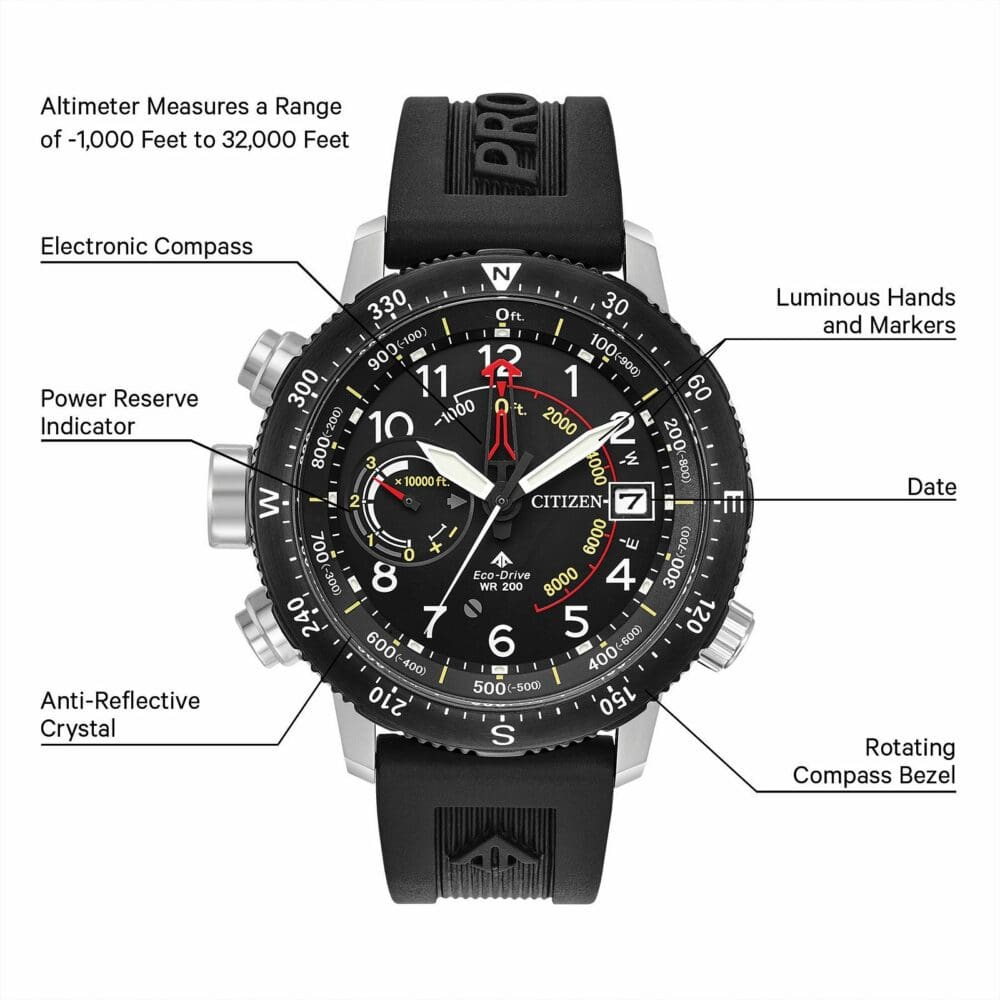
Topping the case is an anti-reflective, impact and shatter resistant mineral crystal. Not much else to report on the crystal. It’s very clear. Well done. Outside of the crystal is an exterior bi-directional rotating bezel purpose-built for the Altichron. Rounding the bezel are four compass points of direction, pipped by an N for north. In between the directional markers are dashes and numbers that break the bezel into 360 degrees of longitude. An interior bezel shows 1000 feet of scale for the altimeter function and angles down to the dial. The dial is a tad busy, as a watch with such function employs. I’ve seen busier on plain ol’ watches so no points deducted here. The top layer of the dial shows standard easy to read numbers. There’s a cutout for the date window at 3 o’clock. A small dial cuts into the 9 o’clock position. This dial’s main function shows altitude in the tens of thousands of feet but in its passive state shows the power reserve. It also has a function for calibration displayed with plus and minus symbols. Inside the numbers is the scale for thousands of feet spanning from minus 1000 to 8,000 feet. Marked at the bottom of the dial is WR200, denoting the watch’s water resistance down to 2oo metres and the wordmark for Eco-Drive.
Let’s jump down into the guts for a moment. The vast majority of Citizen watches are powered by their proprietary Eco-Drive technology. Underneath the dial is a solar cell that takes a charge from every day light sources to charge a lithium-ion cell. Depending on the watch, a single full charge can keep running for six months to seven years! In the case of the Altichron, the manual advises turning off the altimeter and compass when not in use to preserve power. Fear not, there are automatic shut-offs for both functions. Back to the outside…
The case clocks in at a beefy 52mm lug to lug with a depth measuring 14.5mm. On the scale with the strap, it weighs 130g. It’s not a svelte little number but why would it be? Everything about the Altichron is built tough as befits its purpose. It feels like it can take a few smacks and keep running. Chunkiness aside, it doesn’t feel like I’m wearing a hockey puck on my 7″ wrist. It did take a few days to adjust but I could keep it on my wrist all the time if it made sense. Inside the case, the hands of the Altichron are standard sword style filled with a powerful blue lume. The lume appears in the square indices marking hours. There are two additional red hands on the Altichron directly related to the mountaineering functions. On the outside of the case is a typical winding crown at 4 o’clock. It has a two stage adjust, first click for winds up to set the date and second click sets the time. On the left side of the case are two pushers and an atmospheric pressure sensor that detects altitude. The top button activates the electronic compass with a single push. The bottom activates the altimeter. Unless you’re way above sea level, you may not get much out of the altimeter. Toronto is a mere 250 feet above sea level so I guess I have to take it up the CN Tower. The Altichron pressure sensor, probably like all pressure sensors do not work in large commercial aircraft where the cabin is pressurized. I’m not sure how it would read, but I wouldn’t use the Altichron to land a plane. In fact, the manual points out that the Altichron measurement results are for reference and recommend one should “Use a commercial specialized device when highly accurate measurement is required.” Again, if one’s life on a mountain depends on such tools, surely they’ll be using a digital altimeter with GPS.
Functionally, when a user presses the top button activating the compass, the compass hand engages and indicates north. To mark north, the compass bezel can then be turned to the compass hand’s direction. Leaving the electronic compass on will cause the hand to keep finding north but its most accurate when on a flat level plane. One press of the bottom altimeter button activates all the red hands. At my low altitude, the power reserve dial rolls to zero indicating I’m well below 10,000 feet, while the compass hand does the same as I’m not in the thousands of feet up. Only the altimeter hand moves along with altitude scale bezel to indicate I’m a mere 250 feet up. One note to the watch I was supplied, as I’m Canadian and like much of the world I use the metric system, I do wish that it measured metres instead of feet but that’s far from a dealbreaker. Another thing to note about the Altichron is that it requires calibration for both the compass and altimeter. Neither is particularly difficult to calibrate, and in addition to the manual, Citizen provides videos on YouTube that illustrate the method. It did take me several attempts to calibrate the compass and though I gave up after four tries, turns out what I did worked. I don’t need to understand why, I am happy to accept the results despite the lack of clarity.
For these reviews, I tend to open the case back but because this is a fairly complex watch, I decided to just leave it alone. This was a good plan as the case back actually says DO NOT OPEN! SERVICE CENTRE REPAIR ONLY. There’s nothing particularly decorative about the case back. Now, the one issue I have with this watch is actually an annoying one. While I love the sporty look of the thick polyurethane strap, woe to us whose wrists fall in between the adjustment holes. For me, I have to wear is a bit looser than I’d like because the next size down is too tight on my wrist. It doesn’t roll over so I’ll be fine wearing it safely. The one thing that I do have an issue with is how sticky and tight the fit of the hole strap is in the two free loops of the buckle strap. It takes considerable effort to thread it through and to remove it from the loops. I have to pull them out with enough strength that if feels I may break them one day. Perhaps the loops will loosen with age but I may start looking at purchasing a different strap for the Altichron. Which is actually a fun thing to have to do. As far as complaints go, this one hardly registers as one.
After having had this watch on my wrist almost exclusively for the last several weeks, I have to say that it’s a joy to wear. Despite its girth, it wears surprisingly light. I think it appears larger than it is in real life. Yes, the dial is somewhat busy but as it is a very specific tool watch, that makes sense. It delivers a lot of data and requires all its markings and text. Now, as I’ve said over and over in this review, this watch was designed and built for anyone who would require the use of a compass and/or altimeter. I can’t imagine a scenario where I’ll need to know my approximate altitude and if I do need to figure out direction, I’ll be using my phone all of the time. But having these features built into a wristwatch is just so much fun. While it may sound trivial and shallow, that’s one big reason I will wear specific watches. I wear them for their use, their look and because of my interest level. This watch crosses over many of those reasons for me, which is probably why it’s been the one I grab most mornings.
This year, I discovered all the brands under the Citizen Watch Canada umbrella. Heritage and history seem important to all these brands and I know there are watch lovers out there who really appreciate this aspect. And, of course, the Promaster line is in part what made the chief brand famous. Its this line that is one of the most exciting as Citizen has served it with new feature-rich releases and beautiful colourways, materials, uses and designs. I look forward to what Citizen has in store for the future. In the meantime, have a look at what Citizen offers.

